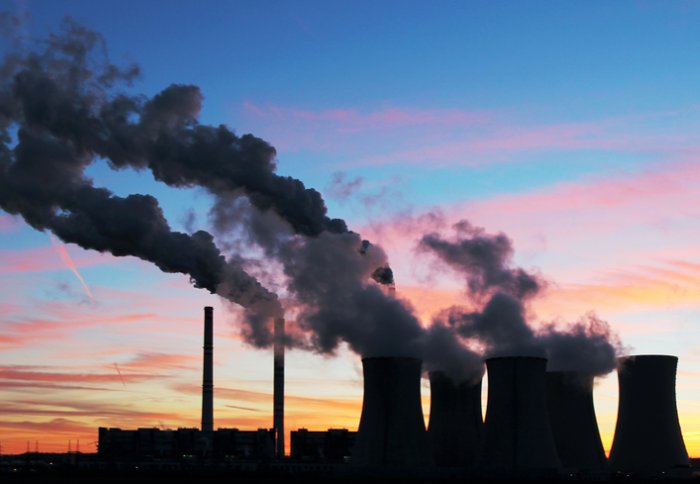

Waste CO2 could be harnessed to produce useful materials - from furniture to trainer soles - using methods developed at Imperial College London.
New research, published in ACS Catalysis, shows that waste carbon dioxide, captured from the emissions from a UK power station, can be used to produce polymers which are important in the production of materials called polyurethanes.
The team, from the Department of Chemistry and Imperial spin-out company Econic Technologies, carried out experiments using carbon dioxide from Ferrybridge Power Station’s carbon capture demonstrator plant in West Yorkshire. This plant, opened in 2011, is designed to capture some of the waste CO2 produced by the power station.
Their results showed that using novel catalyst technology developed at Imperial, it was possible to use the waste CO2 to prepare a useful product. The team estimates that, for every tonne of CO2 used in their process, a further two tonnes of emissions could be saved by avoiding making the petrochemical-based raw material it displaces.
The material produced using this carbon dioxide recycling is called a polycarbonate polyol. Polyols are commonly used to make polyurethanes, a material found in a huge range of consumer and industrial products, including insulation, furniture, cars and footwear.
Carbon dioxide streams from power stations are among the most contaminated sources of CO2 available, so the work we have done is a big step forward.
– Professor Charlotte Williams
Current industrial processes for producing these polyols require petrochemicals such as propylene oxide, which are toxic, expensive, and also carry an environmental burden as they are derived from petroleum. The technology developed at Imperial, and being taken to market through Econic Technologies, offers existing manufacturers a route to lower costs and lower carbon impact.
Several teams around the world are currently investigating methods of producing polyols using carbon dioxide but it is a challenging task. More often than not the systems have been found to work only with high purity CO2 and so have little relevance for utilisation of real sources of waste CO2.
“Using real carbon dioxide emissions to make useful products is very challenging, because frequently catalysts are not tolerant of minor contaminants,” said Professor Charlotte Williams, who led the study. “Carbon dioxide streams from power stations are among the most contaminated sources of CO2 available, so the work we have done is a big step forward because the catalysts show such remarkable tolerance and function in almost exactly the same way as using pure CO2.
“The fact that our technology also offers economic benefits means there is strong interest from the industrial community and gives them a real incentive to drive forward their adoption of the technology.”
Econic Technologies, the spin-out company set up to commercialise catalysts developed by the team, is already working with major chemical companies to support the adoption of this technology. The importance and potential of the technology has been recognised by a number of prestigious awards to the company and it has received support from Imperial Innovations and other investors.
The research is funded by the Government’s Department of Energy and Climate Change and the Engineering and Physical Sciences Research Council.
-
“Adding Value to Power Station Captured CO2: Tolerant Zn and Mg Homogeneous Catalysts for Polycarbonate Polyol Production using a new method developed at Imperial College London”, by A. M. Chapman, C Keyworth, M. R. Kember, A. J. J. Lennox and C. K. Williams, is published in the journal ACS Catalysis.
Supporters

Article text (excluding photos or graphics) available under an Attribution-NonCommercial-ShareAlike Creative Commons license.
Photos and graphics subject to third party copyright used with permission or © Imperial College London.
Reporter

Laura Gallagher
Communications Division

Contact details
Tel: +44 (0)20 7594 6701
Email: l.gallagher@imperial.ac.uk
Show all stories by this author
Leave a comment
Your comment may be published, displaying your name as you provide it, unless you request otherwise. Your contact details will never be published.




Comments
Comments are loading...